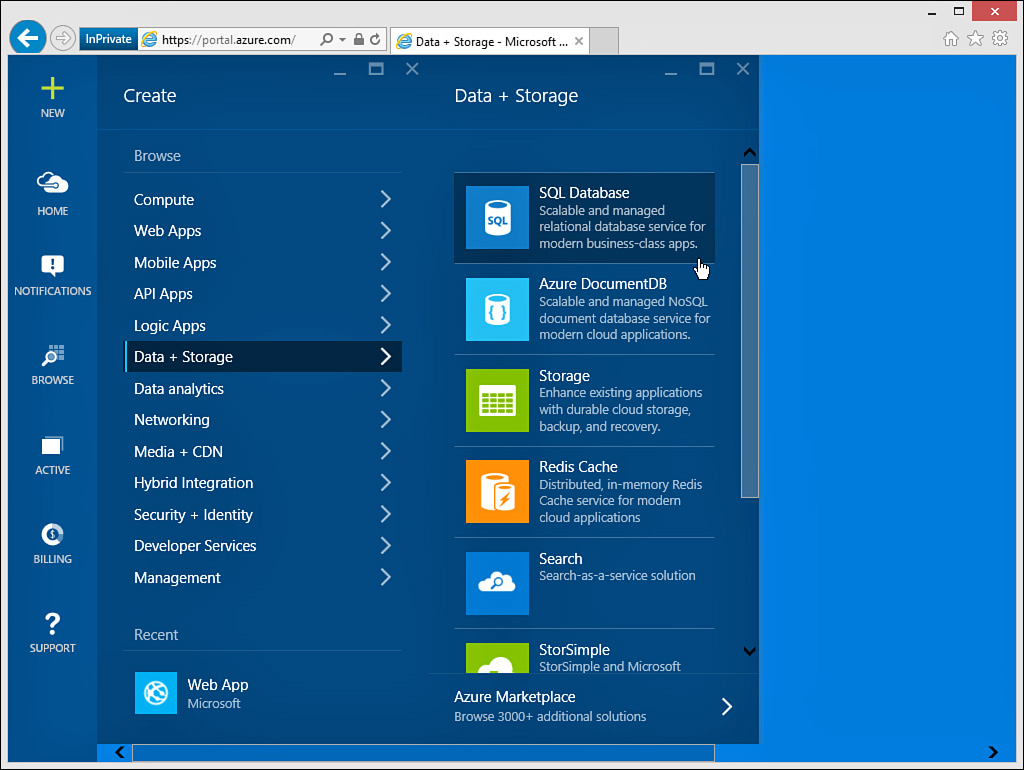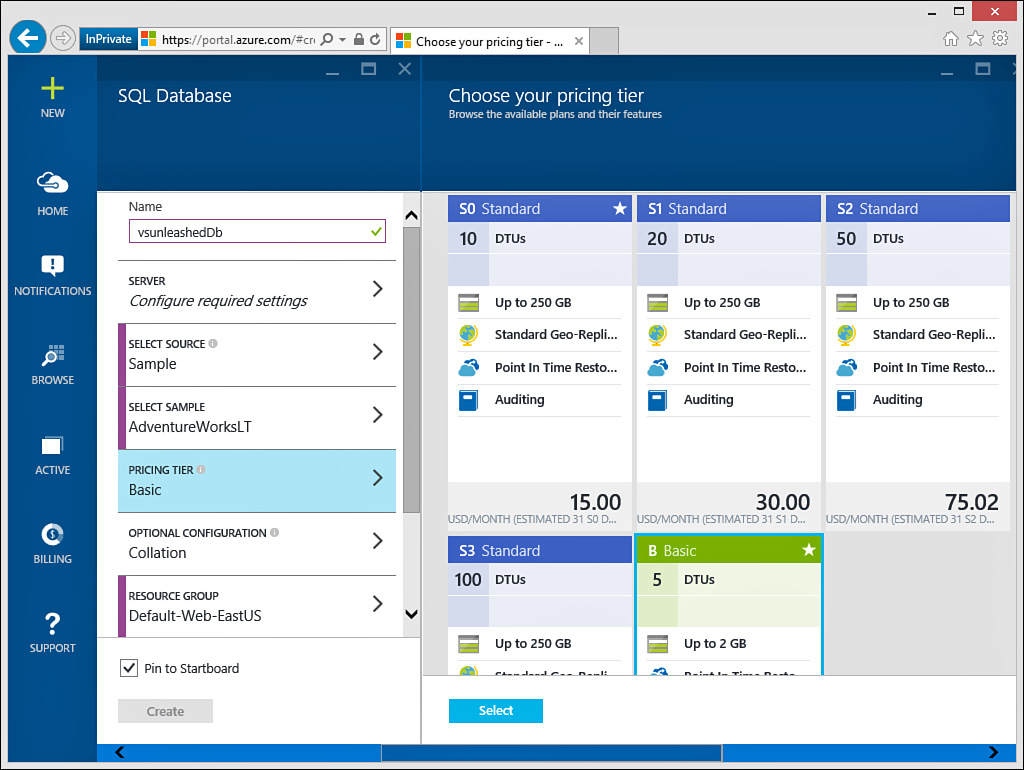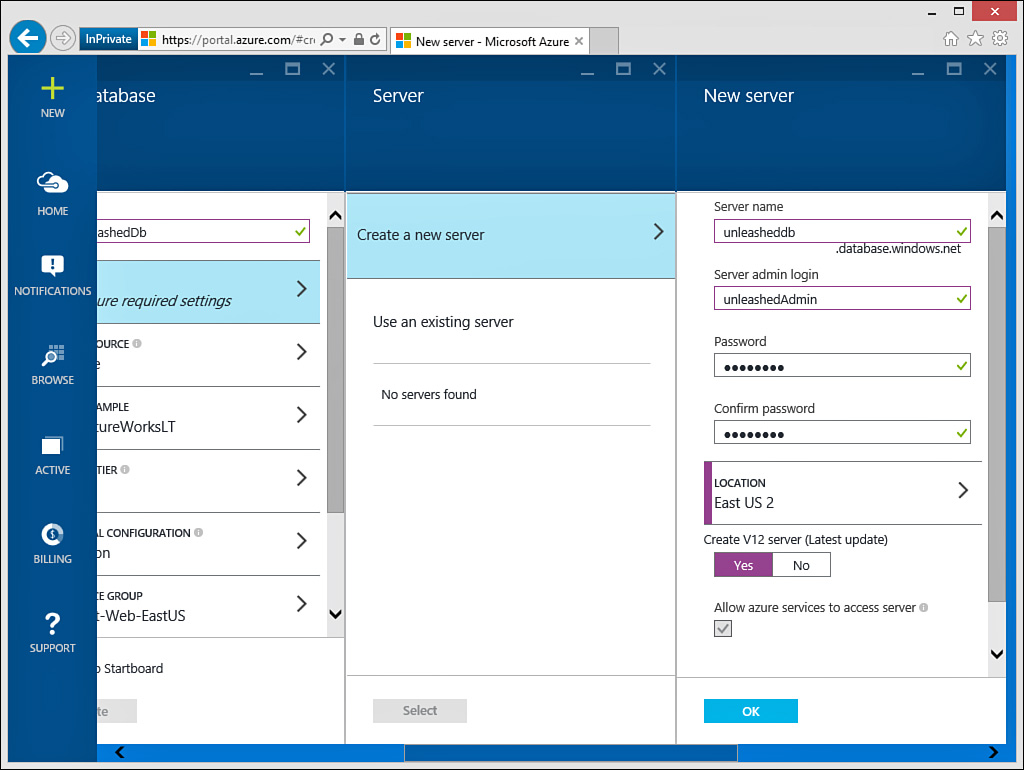 Creating a Database
by Mike Snell, Lars Powers
Microsoft Visual Studio 2015 Unleashed, Third Edition
Creating a Database
by Mike Snell, Lars Powers
Microsoft Visual Studio 2015 Unleashed, Third Edition
- About This eBook
- Title Page
- Copyright Page
- Contents at a Glance
- Table of Contents
- About the Authors
- Dedication
- Acknowledgments
- We Want to Hear from You!
- Reader Services
- Introduction
- Part I: Introducing Visual Studio 2015
- Chapter 1. A Quick Tour of Visual Studio 2015
- Chapter 2. The Visual Studio IDE
- Chapter 3. The .NET Languages
- What’s New in C# 6.0 and VB 14
- Language Primer
- Language Features
- Infer a Variable’s Data Type Based on Assignment
- Create an Object and Initialize Its Values (Object Initializers)
- Define a Collection and Initialize Its Values
- Creating an Instance of a Nonexistent Class
- Add Methods to Existing Classes (Extension Methods)
- Add Business Logic to Generated Code (Partial Methods)
- Access and Query Data Using the .NET Languages
- Write Simple Unnamed Functions Within Your Code (Lambda Expressions)
- Splitting an Assembly Across Multiple Files
- Working with XML Directly Within Your Code (VB Only)
- Removing Unused Arguments from Event Handlers (VB Only)
- Creating an Automatically Implemented Property
- Dropping the Underscore in VB for Line Continuation
- Working with Dynamic Languages/Objects
- Covariance and Contravariance
- Asynchronous Programming
- The .NET Framework
- Summary
- Part II: An In-Depth Look at the IDE
- Chapter 4. Solutions and Projects
- Chapter 5. Browsers and Explorers
- Chapter 6. Introducing the Editors and Designers
- Part III: Working with the Visual Studio Tools
- Chapter 7. Working with Visual Studio’s Productivity Aids
- Chapter 8. Testing Code
- Chapter 9. Refactoring Code
- Chapter 10. Debugging Code
- Chapter 11. Deploying Code
- Chapter 12. Developing Applications in the Cloud with Windows Azure
- Chapter 13. Working with Databases
- Part IV: Extending Visual Studio
- Part V: Building Web Applications
- Chapter 17. Building Modern Websites with ASP.NET 5
- Chapter 18. Using JavaScript and Client-Side Frameworks
- Chapter 19. Building and Consuming Services with Web API and WCF
- Part VI: Building Windows Client Apps
- Chapter 20. Building Windows Forms Applications
- Chapter 21. Building WPF Applications
- Chapter 22. Developing Office Business Applications
- Part VII: Creating Mobile Apps
- Chapter 23. Developing Windows Store Applications
- Chapter 24. Creating Windows Phone Applications
- Chapter 25. Writing Cross-Platform Mobile Applications with Apache Cordova
- Index
- Code Snippets
Creating a Database
The Azure web app blade allows you to easily add a SQL database or a MySQL database to your website. Of course, you can add these and other data storage and access services directly from the Azure home page and then configure their access using the other features of Azure. However, here we will walk through the scenario of adding a SQL database to your Azure web app.
You use the New button on top left of the web app blade (refer to Figure 12.28) to get started adding a SQL database to your web app. This brings up the Create blade where you can select Data + Storage form the available categories. You can then select SQL Database from the possibilities as shown in Figure 12.29.
The next step is to provide additional details about your database. Here you define the name of your database, your pricing tier, resource group, server, and more. Figure 12.30 shows an example. In this case, the database name is set to vsunleashedDb; the pricing tier is set to B Basic. Notice too that this database uses the Adventure Works sample database; this sample database is an option inside Azure. Figure 12.31 shows the process of selecting (or in this case, creating) a database server for hosting the database.
Azure will now provision your database and link it correctly to your Azure web app. You can view provisioning progress using the notifications from the Startboard. Once it’s complete, you can view, monitor, and manage the SQL database from the Azure portal. To do so, you can browse to the database using the Browse button in the portal. Figure 12.32 shows accessing a SQL database from Browse, Recent. You can also filter the browse list by type (such as SQL Server).
Figure 12.33 shows the database up and running in Azure (and the related management Startboard). From here you can view and configure resource utilization, failed connections, events, alerts, geo replication, and more. Notice the button Open in Visual Studio. This allows you to open the database directly inside Visual Studio (more on this to come).
-
No Comment




